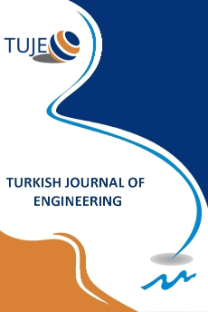LIGHTWEIGHT FOAM IMPACT ATTENUATOR DESIGN FOR FORMULA SAE CAR
LIGHTWEIGHT FOAM IMPACT ATTENUATOR DESIGN FOR FORMULA SAE CAR
___
- 2017-18 Formula SAE® Rules. 2016. SAE International.
- Altair University, (http://www.altairuniversity.com/wp-content/uploads/2011/10/RADIOSS_10.0_Reference_Guide2.pdf) [Access 14 July 2017].
- Belingardi, G., Obradovic, J. (2010). ‘‘Design of the Impact Attenuator for a Formula Student Racing Car: Numerical Simulation of the Impact Crash Test.’’ Journal of the Serbian Society for Computational Mechanics, Vol. 4, No. 1, pp. 52-65.
- Boria, S. (2010). ‘‘Behaviour of an Impact Attenuator for Formula SAE Car under Dynamic Loading.’’ International Journal of Vehicle Structures and Systems, Vol.2, No. 2, pp. 45-53.
- Bouix, R., Viot, P., Lataillade, J., (2009). ‘‘Polypropylene foam behaviour under dynamic loadings: Strain rate, density and microstructure effects.’’ International Journal of Impact Engineering, Vol. 36, No. 2, pp. 329-342
- Enomoto, H., Miyazaki, Y., Mizuno, H., Hirano, E., Kitayama, S., Yamazaki, K., Uota, N. (2007) ‘‘Development of CFRP Monocoque Front ImpactAttenuator for FSAE with VaRTM.’’ Society of Automotive Engineers of Japan, 2007-32-0120.
- Impaxx, (https://www.fsaeonline.com/page.aspx?pageid=193613e4-fff1-4ea9-97ec-eb1c07fbe3c0) [Access 14 July 2017].
- Munusamy, R., Barton, D. (2010).‘‘Lightweight impact crash attenuators for a small Formula SAE race car.’’ International Journal of Crashworthiness, Vol. 15, No.2, pp. 223-234.
- Obradovic, J., Boria, S., Belingardi, G. (2012). ‘‘Lightweight design and crash analysis of composite frontal impact energy absorbing structures.’’ Composite Structures, Vol. 94, No. 2, pp. 423-430.
- Slik, G., Vogel, G., Chawda, V., (2006). ‘‘Material Model Validation of a High Efficient Energy Absorbing Foam.’’ 5th LS-DYNA Forum, Ulm.
- Untaroiu,C., Shin, J., Crandall, J., Fredriksson. R., Bostrom, O., Takahashi, Y., Akiyama, A., Okmoto, M., Kikuchi, Y. (2010). ‘‘Development and validation of pedestrian sedan bucks using finite-element simulations: a numerical investigation of the influence of vehicle automatic braking on the kinematics of the pedestrian involved in vehicle collisions.’’ International Journal of Crashworthiness, Vol. 15, No. 5, pp. 491–503
- Yıldızhan, M., Efendioğlu B., Kaya, N., Öztürk, İ., Albak E., Öztürk, F. (2016). ‘‘Design of improved energy absorbing pads to reduce occupant injuries in vehicle side impact.’’ International Journal of Vehicle Design, Vol. 71, No. 1/2/3/4, pp. 174-190.
- ISSN: 2587-1366
- Yayın Aralığı: 4
- Başlangıç: 2017
- Yayıncı: Mersin Uüniversitesi
Canan AKSU CANBAY, Himdad İbrahim MUSTAFA, İSKENDER ÖZKUL
CHARACTERIZATION OF HYDROTHERMALLY SYNTHESISED HYDROXYAPATITE BIOCERAMIC
İskender Özkul, Himdad İbrahim Mustafa, Canan Aksu Canbay
APPLICABILITY OF SOLAR AND WIND ENERGY TECHNOLOGIES FOR A NON-RESIDENTIAL BUILDING
Canan AKSU CANBAY, İSKENDER ÖZKUL
Emre İsa ALBAK, EROL SOLMAZ, NECMETTİN KAYA, Ferruh ÖZTÜRK
LIGHTWEIGHT FOAM IMPACT ATTENUATOR DESIGN FOR FORMULA SAE CAR
Necmettin Kaya, Erol Solmaz, Emre İsa ALBAK, Ferruh Öztürk
